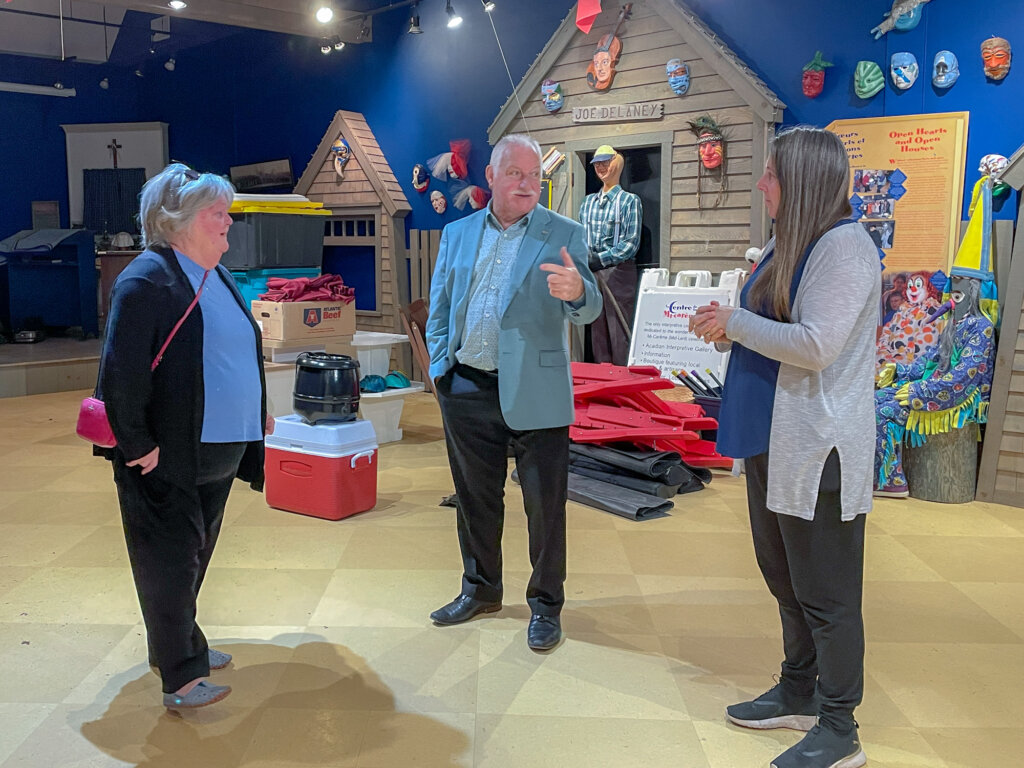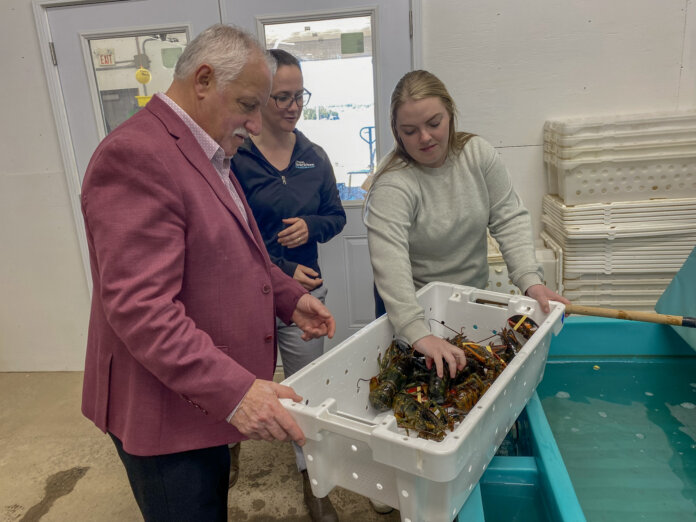SYDNEY/FALL RIVER: The local MP spent three days last week in Cape Breton meeting with educators, arts administrators, and economic development leaders to discuss the region’s unique cultural heritage.
The visit to Cape Breton coincided with Atlantic Official Languages Week and Gaelic Nova Scotia Month, Darrell Samson, the Sackville—Preston—Chezzetcook MP and Parliamentary Secretary to the Minister of Rural Economic Development and Minister responsible for ACOA, also spoke with folks about the regions competitive advantages, challenges, and plans for future growth.
Parliamentary Secretary Samson spoke with representatives of the Centre de la Mi-Carême in Grand Étang and Les Trois Pignons in Chéticamp about how they are preserving Acadian heritage and enhancing experiences for locals and tourists who are exploring Acadian culture.
In downtown Sydney, he met with representatives of the Highland Arts Theatre (HAT) who are providing a year-round professional theatre presence as well as enriching the lives of residents, through youth programs and training for emerging artists.
ADVERTISEMENT:
The HAT is an inspiring success story and an important draw for visitors to the region.
The directors at the Beinn Mhàbu campus of Colaisde na Gàidhlig / The Gaelic College hosted the Parliamentary Secretary for a discussion about their year-round programming in Gaelic culture, music, language, crafts, and traditions.
This new post-secondary institution is an expansion from the main college, which was founded in 1938 and is the only school of its kind in North America.

Samson also had the opportunity to visit Université Sainte-Anne, Nova Scotia’s only French language post-secondary school. There, he met with scientists and faculty at the university’s Petit-de-Grat campus on Isle Madame and toured the recently upgraded and modernized Marine Research Centre.
The centre is working to help rural fishing industries adapt to changes in the aquaculture sector through innovation and community education programs.
ADVERTISEMENT:
This visit to Cape Breton also involved discussions on economic development in the region.
In Chéticamp, Parliamentary Secretary Samson participated in a community consultation lead by the Conseil de développement économique de la Nouvelle-Écosse (CDÉNÉ).
In Sydney, he met with senior representatives of the Community Business Development Corporation (CBDC), Coastal Business, to hear more about how they are supporting entrepreneurs, youth, and underrepresented groups start and grow their businesses.
The Government of Canada is committed to building on the economic momentum in the Atlantic by showcasing the region’s significant competitive advantages, including the vibrant culture, that make this part of the country so unique.
ADVERTISEMENT:
“It’s the people that make a region special. With a great tourism product, clever entrepreneurs and a rich French and Gaelic history, Cape Breton is one of the best places to live and visit in the country.”
– Gudie Hutchings, Minister of Rural Economic Development and Minister responsible for ACOA
“Linguistic minority communities have long been part of the fabric of Cape Breton, combining unique cultures with ingenuity and a strong work ethic. The people in these communities are drawing on their roots and blossoming as entrepreneurs, sharing their talents in the arts and business, drawing new and repeat visitors to discover the magic of the Island.”
– Darrell Samson, Member of Parliament for Sackville—Preston—Chezzetcook and Parliamentary Secretary to the Minister of Rural Economic Development and Minister responsible for ACOA
Quick facts
• Nova Scotia has 11 Official Languages minority communities, including Argyle, Clare, Greenwood, Bridgewater, Halifax Regional Municipality, Truro, Pomquet, Torbay, Arichat, Sydney, and Cheticamp.
• Cape Breton has a thriving Acadian community centred in Isle Madame and Cheticamp. The region’s unique Acadian culture and festivals (such as “la Mi-Careme”) help drive tourism for the Island while supporting the thriving Acadian culture.
• There are currently fewer than 500 native Gaelic speakers left in Cape Breton today; however they contribute significantly to the Gaelic-speaking community worldwide. The region’s Gaelic music heritage is also an important tourism draw, attracting visitors from around the globe.
• Established in 1985, Coastal Business CBDC delivers financial and advisory assistance to new and expanding businesses in Sydney and the surrounding area.

































